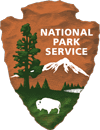
Freedom Crossing Monument
Historical fact, literary fiction, and artistic genius come together in one awe-inspiring monument.
Small as they are, villages across America have many stories to tell about the past. This story is a combination of historical fact, literary fiction, and artistic genius.
Since its publication in 1969, thousands of schoolchildren have read Margaret Goff Clark’s novel
Freedom Crossing. Although it is fiction, the book tells the very real story of the Underground Railroad in Lewiston, NY, a small village seven miles north of Niagara Falls.
While making the treacherous journey from the South to the North, freedom seekers had to be constantly on the lookout for slave catchers who were hired to capture and return them to the South. Once in Lewiston, freedom seekers were aided by many of its citizens who volunteered to help them make their way across the Niagara River to Canada and freedom.
Since they were breaking the law, the people of Lewiston maintained “a code of silence” where they “never trusted or spoke to outsiders about their secret activities.” It is estimated that they helped smuggle thousands of enslaved people across the border.
Josiah Tryon was the local ‘station master’ for the Underground Railroad. He was a tailor who, in gifting bright-colored jackets to slave catchers, cleverly warned the villagers of their presence. Tryon also hid freedom seekers in his Lewiston home and, in the dark of night, he used his rowboat to secretly ferry them across the river to Canada.
These historical events, as captured in Clark’s novel, were the inspiration for the Freedom Crossing Monument. It honors the freedom seekers and their brave journeys on the Underground Railroad, as well as the residents of Lewiston who helped them.
Unveiled in 2009, the monument was created by local artist Susan Geissler. It features bronze sculptures of a freedom seeking family, Josiah Tryon and his rowboat, as well as Laura Eastman, the teenage protagonist of Clark’s novel.
In this awe-inspiring tableau, the mother sits in the rowboat, steadying herself with one arm and reaching out with the other as Tryon hands off her infant daughter. Above them, the father and Laura stand on rocks that symbolize the banks of the Niagara River. The father, who uses a cane, sees his first glimpse of Canada across the river as he follows Laura’s extended arm and pointed index finger. “Her left hand hovers over [his] back, encouraging him forward.”
Each sculpture contains secret codes for the public to find. On the father’s left pant leg, for example, a quote from Clark’s novel reads: “Though some may fail, those who try on and on will succeed.” The play on words, ‘try on,’ refers to the local station master.
The Freedom Crossing Monument is located along the Niagara River at Lewiston Landing.
Hope L. Russell, Ph.D.

